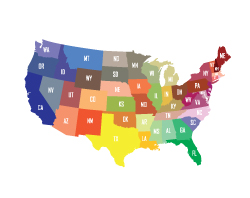Police Authority: DUI Law Enforcement & Arrests Procedures
DUI law enforcement & arrests represent a critical intersection of public safety and individual rights in the American legal system. Understanding how officers conduct these arrests, their legal authority, and the procedures they must follow can significantly impact your case outcome. This comprehensive guide explores the entire process from initial traffic stop through arrest, examining officer protocols, testing procedures, and your constitutional protections during DUI investigations.
Officer Training and Certification Requirements
Law enforcement officers must complete specialized training to conduct DUI enforcement effectively. Most departments require officers to complete Standardized Field Sobriety Test (SFST) certification through the National Highway Traffic Safety Administration (NHTSA). This training covers the three standardized tests: horizontal gaze nystagmus, walk-and-turn, and one-leg stand. Advanced officers may pursue Drug Recognition Expert (DRE) certification to identify impairment from substances other than alcohol. Many states also require annual recertification and continuing education to maintain these specialized skills.
Legal Standards for Stops and Arrests
Officers must establish reasonable suspicion to initiate a traffic stop, which can include observed traffic violations, erratic driving patterns, or equipment violations. During the stop, officers look for indicators of impairment such as bloodshot eyes, slurred speech, or alcohol odor. The legal standard for arrest is probable cause, typically established through field sobriety test performance and preliminary breath test results. Officers must properly advise suspects of implied consent laws, which generally require drivers to submit to chemical testing or face license suspension.
Department Protocols and Procedures
Police departments maintain detailed protocols for DUI enforcement to ensure consistency and legal compliance. These procedures typically include specific requirements for evidence collection, report writing, and chain of custody for blood or breath samples. Officers must document all observations, test results, and interactions with suspects. Many departments use dash cameras and body cameras to record stops and arrests. Supervisory review of DUI arrests is common to ensure proper procedures were followed.
Statistical Overview of DUI Enforcement
According to recent data, approximately 1.5 million DUI arrests occur annually in the United States. These arrests represent only a fraction of impaired driving incidents, with studies suggesting that drivers operate under the influence approximately 80 times before their first arrest. During holiday periods and special enforcement campaigns, arrest rates typically increase significantly. The conviction rate for DUI arrests generally ranges from 70-85%, with many cases resolved through plea agreements rather than trials.
Traffic Stop: Initial DUI Investigation Standards
The foundation of any DUI law enforcement & arrests case begins with the initial traffic stop. Law enforcement officers must follow specific legal standards and procedures to ensure constitutional compliance and evidence admissibility. Understanding these standards is crucial for both officers conducting investigations and individuals who may face charges.
Probable Cause: Legal Requirements for DUI Stops
Police officers cannot arbitrarily stop vehicles without justification. The Fourth Amendment requires reasonable suspicion of a traffic violation or criminal activity to initiate a traffic stop. This standard is lower than probable cause but must be based on specific, articulable facts rather than hunches or profiles.
Common justifications for DUI-related traffic stops include speeding, weaving between lanes, running red lights, or equipment violations like broken taillights. Officers may also stop vehicles after observing erratic driving patterns such as sudden braking, wide turns, or driving significantly below the speed limit without apparent cause.
Once stopped, officers need probable cause to arrest for DUI. This higher standard requires facts and circumstances that would lead a reasonable person to believe the driver is impaired. The transition from reasonable suspicion to probable cause typically occurs through field observations and preliminary testing.
Field Observations: Signs Officers Look For
During DUI law enforcement & arrests investigations, officers are trained to document specific indicators of impairment. Physical signs include bloodshot or watery eyes, dilated pupils, flushed face, and the odor of alcohol or drugs. Behavioral indicators encompass slurred speech, confusion, difficulty following instructions, and unsteady movements.
Officers also assess the driver’s coordination and cognitive function through simple tasks like retrieving documents from a wallet or glove compartment. Fumbling with items, dropping documents, or inability to locate requested materials can indicate impairment. The driver’s responses to questions about their activities, destination, and alcohol consumption are carefully noted.
Documentation Process: Report Writing Requirements
Proper documentation is essential for DUI law enforcement & arrests cases. Officers must record their observations in detailed reports that include specific times, locations, and descriptions of the defendant’s appearance and behavior. This documentation serves as crucial evidence in court proceedings.
Modern law enforcement agencies increasingly rely on dashboard cameras and body-worn cameras to supplement written reports. These recordings provide objective evidence of the stop, field sobriety tests, and the defendant’s condition. Audio recordings capture speech patterns, while video evidence documents physical coordination and compliance with officer instructions.
The documentation process extends beyond the initial stop to include booking procedures, evidence collection, and chain of custody requirements. Thorough documentation protects both the integrity of the investigation and the rights of the accused, ensuring that DUI law enforcement & arrests procedures meet legal standards for prosecution.
Field Testing: Sobriety Assessment Procedures
Field sobriety tests represent a critical component of DUI law enforcement & arrests investigations, providing officers with standardized methods to assess driver impairment. These assessments must follow strict protocols established by the National Highway Traffic Safety Administration (NHTSA) to ensure reliability and legal admissibility. Understanding these procedures is essential for evaluating the validity of test results in DUI cases.
Standardized Tests: NHTSA Approved Methods
The NHTSA has validated three standardized field sobriety tests that form the foundation of DUI law enforcement & arrests investigations. These tests have undergone extensive research and validation studies to establish their reliability in detecting impairment at or above the legal limit.
The Horizontal Gaze Nystagmus (HGN) test examines involuntary eye movements that become more pronounced with alcohol impairment. Officers observe the suspect’s eyes as they follow a stimulus, typically a pen or flashlight, looking for specific indicators including lack of smooth pursuit, distinct nystagmus at maximum deviation, and onset of nystagmus prior to 45 degrees.
The Walk-and-Turn test is a divided attention assessment requiring suspects to walk heel-to-toe along a straight line for nine steps, turn around using specific steps, and return in the same manner. Officers observe eight potential indicators of impairment including inability to maintain balance, starting before instructions are finished, stepping off the line, and using arms for balance.
The One-Leg Stand test requires suspects to stand on one foot while counting aloud for 30 seconds. Officers look for four specific indicators: swaying while balancing, using arms for balance, hopping to maintain balance, and putting the foot down before the 30-second period ends.
Officer Training: Certification Requirements
Proper administration of field sobriety tests requires specialized training and certification. Officers must complete NHTSA-approved courses that cover test administration, scoring procedures, and recognition of impairment indicators. This training ensures consistency across different jurisdictions and maintains the scientific validity of the tests.
Certification programs include both classroom instruction and practical exercises where officers practice administering tests under supervision. Regular recertification is required to maintain proficiency and stay current with updated protocols. Many departments also provide ongoing training to address common administration errors that can compromise test validity.
Test Administration: Proper Procedures
The validity of field sobriety tests in DUI law enforcement & arrests cases depends heavily on proper administration. Officers must provide clear, standardized instructions and demonstrate each test before asking suspects to perform them. Environmental factors such as lighting, weather conditions, and surface conditions can significantly impact test performance and must be considered when evaluating results.
Non-standardized tests, while sometimes used by officers, lack the scientific validation of NHTSA-approved methods. These may include finger-to-nose tests, alphabet recitation, or counting exercises. Such tests have limited evidentiary value and may be challenged in court due to their lack of standardization.
Weather conditions, uneven surfaces, improper footwear, and medical conditions can all affect test performance regardless of impairment level. Officers must document these factors and consider their potential impact on test results when making arrest decisions based on field sobriety test performance.
Chemical Testing: BAC Measurement Standards
Chemical testing forms the cornerstone of DUI law enforcement & arrests cases, providing objective evidence of blood alcohol concentration (BAC) levels. These tests must adhere to strict scientific and legal standards to ensure accuracy and admissibility in court proceedings. Understanding BAC measurement protocols is crucial for evaluating the strength of evidence in impaired driving cases.
Breathalyzer Tests: Machine Calibration Requirements
Breathalyzer devices used in DUI law enforcement & arrests must undergo regular calibration and maintenance to ensure accurate readings. Most jurisdictions require calibration checks using certified alcohol standards at specified intervals, typically every 30 to 90 days depending on local regulations.
Machine operators must be trained and certified in proper device operation, including pre-test procedures, sample collection protocols, and troubleshooting common issues. The testing process requires a 15-minute observation period before breath sample collection to ensure the suspect has not consumed alcohol, used mouthwash, or regurgitated, which could affect results.
Quality control measures include duplicate testing requirements, where two breath samples must be collected within a specified time frame and produce results within an acceptable range. If readings vary significantly, additional testing may be required. Documentation of machine maintenance, calibration records, and operator certification is essential for legal admissibility.
Blood Testing: Medical Procedures
Blood alcohol testing provides the most accurate BAC measurement but requires strict medical protocols. Only qualified medical professionals, including doctors, nurses, or certified phlebotomists, can collect blood samples for DUI law enforcement & arrests cases. The collection site must be properly sterilized using non-alcoholic antiseptics to prevent contamination.
Blood samples must be collected in sterile tubes containing sodium fluoride as a preservative and potassium oxalate as an anticoagulant. These additives prevent fermentation and clotting that could alter BAC readings. Testing must occur within specific time limits, typically within two hours of driving, though some jurisdictions allow longer periods with proper documentation.
Chain Custody: Evidence Preservation
Proper chain of custody procedures are essential for maintaining the integrity of chemical test evidence in DUI law enforcement & arrests cases. Every person who handles the sample must be documented, including collection time, transport personnel, laboratory technicians, and storage locations.
Sample storage requires specific temperature controls and secure facilities to prevent tampering or degradation. Transportation protocols must maintain these conditions while ensuring timely delivery to certified laboratories. Any break in the chain of custody can result in evidence being excluded from trial.
Laboratory analysis must follow standardized procedures with regular quality control testing using known standards. Results must be reported with appropriate margins of error and include documentation of all testing procedures, equipment calibration, and analyst qualifications. These comprehensive protocols ensure that chemical test evidence meets legal standards for DUI prosecutions.
Arrest Process: DUI Booking Procedures
The arrest and booking phase of DUI law enforcement & arrests involves complex administrative and constitutional requirements that must be carefully followed to protect both public safety and individual rights. Understanding these procedures is essential for evaluating the validity of arrest protocols and ensuring proper legal processing of impaired driving cases.
Miranda Rights: Constitutional Protections
Miranda warnings become required during DUI law enforcement & arrests when custodial interrogation begins. This typically occurs after formal arrest when the suspect is in custody and officers begin questioning about the incident. The familiar warnings inform suspects of their right to remain silent, that statements can be used against them, and their right to an attorney.
However, routine booking questions such as name, address, and date of birth are considered administrative and do not require Miranda warnings. Officers can also ask questions related to public safety without providing warnings. The key distinction lies in whether questions are designed to elicit incriminating responses about the alleged DUI offense.
Failure to provide proper Miranda warnings can result in suppression of statements made during custodial interrogation, though this does not necessarily invalidate the entire arrest if other evidence supports the charges.
Booking Process: Administrative Requirements
DUI booking procedures involve extensive documentation and administrative steps beyond standard arrest protocols. Officers must complete detailed arrest reports documenting the traffic stop, field sobriety tests, chemical test results, and observations of impairment. These reports form the foundation of the prosecution’s case.
Administrative license suspension proceedings typically begin immediately upon arrest for DUI law enforcement & arrests cases. Officers must serve notice of suspension and confiscate the driver’s license, issuing a temporary permit that allows driving for a limited period. This civil penalty occurs separately from criminal proceedings.
Vehicle impoundment procedures vary by jurisdiction but generally require proper notice to the vehicle owner and secure storage. Officers must document the vehicle’s condition and inventory contents to prevent claims of damage or theft.
Property Handling: Personal Effects
Proper handling of personal property during DUI law enforcement & arrests protects both the suspect’s rights and officer safety. All personal effects must be inventoried and securely stored according to department protocols, including wallets, jewelry, and cell phones.
Jail booking includes fingerprinting, photographing, and medical screening to identify health issues or injuries. The process also determines eligibility for bond release and schedules initial court appearances.
Bond and release for DUI charges follow standard bail schedules, though judges may adjust amounts based on prior offenses, flight risk, and public safety concerns.
Legal Challenges: Common DUI Arrest Defenses
Even with strict DUI law enforcement protocols, legal challenges can lead to charge reduction or dismissal. Procedural errors during arrest often affect case outcomes, making it vital to understand common defenses.
Fourth Amendment violations are among the strongest defenses. If officers lack reasonable suspicion for a stop or probable cause for arrest, resulting evidence may be suppressed. Courts require clear, factual justifications for stops and arrests.
Improper stops often occur when officers rely on subjective judgment or unverified tips. Stops based only on leaving bars or restaurants, without signs of impairment, may breach constitutional rights.
Field sobriety test errors, such as unclear instructions, uneven surfaces, or ignoring medical conditions, can invalidate results. Officers must follow NHTSA standards precisely.
Breathalyzer and blood test evidence can also be challenged. Calibration errors, poor maintenance, or gaps in chain of custody may render results unreliable. Officer training deficiencies in testing procedures further weaken prosecution evidence.
Final Thoughts: Understanding DUI Law Enforcement & Arrests Impact
DUI law enforcement represents a critical intersection of public safety and constitutional protections. The complex legal framework governing these arrests requires officers to maintain rigorous standards while protecting individual rights. Even minor procedural errors—such as improper administration of field sobriety tests, faulty breathalyzer calibration, or insufficient reasonable suspicion for the initial stop—can fundamentally alter case outcomes and potentially invalidate evidence.
The training requirements for officers reflect the technical complexity of DUI investigations. From understanding the scientific principles behind breath testing to recognizing subtle signs of drug impairment, effective enforcement demands continuous education and skill development. Equipment maintenance protocols and proper documentation procedures are equally crucial, as defense attorneys frequently challenge these technical aspects.
For individuals, understanding these enforcement procedures provides valuable insight into their rights during traffic stops and arrest situations. Knowledge of implied consent laws, field sobriety test limitations, and proper arrest procedures can inform decision-making during these high-stakes encounters.
The statistics surrounding DUI enforcement reveal both the scope of the problem and the challenges law enforcement faces. With millions of impaired driving incidents occurring annually but only a fraction resulting in arrests, the system relies heavily on deterrence effects and public education alongside enforcement efforts.
Ultimately, effective DUI law enforcement requires balancing aggressive public safety measures with scrupulous attention to constitutional protections and procedural accuracy.
Next Steps: Consult DUI Law Enforcement & Arrests Attorney
If you’re facing DUI charges, understanding law enforcement procedures is crucial for building an effective defense. Contact an experienced DUI attorney who can review the specific circumstances of your arrest and identify potential procedural violations. Professional legal representation can make the difference between conviction and case dismissal. For expert legal guidance on DUI law enforcement & arrests cases, visit 1800duilaws to connect with qualified attorneys who specialize in challenging improper arrest procedures and protecting your constitutional rights.
For qualified attorneys seeking exclusive drunk driving defense leads, visit our website to learn more about our specialized lead generation services.
Frequently Asked Questions About DUI Police Stops and Investigations
1. Can Police Stop You Without Cause for DUI?
No, police must have reasonable suspicion of a traffic violation or criminal activity to initiate a traffic stop. Random stops without cause violate Fourth Amendment protections.
2. What Happens If I Refuse Field Sobriety Tests?
Field sobriety tests are generally voluntary, but refusal may be used as evidence against you. Chemical tests, however, carry implied consent penalties including automatic license suspension.
3. How Long Can Police Hold You During DUI Investigation?
Police can detain you for a reasonable time to complete their investigation, typically 1-3 hours. Excessive detention without arrest may violate your constitutional rights.
4. Are DUI Checkpoints Legal in All States?
No, twelve states prohibit DUI checkpoints as violations of their state constitutions. However, most states allow properly conducted sobriety checkpoints with advance notice.
5. Can DUI Arrests Be Challenged in Court?
Yes, DUI arrests can be challenged on multiple grounds including improper stop, testing errors, equipment malfunctions, and procedural violations by law enforcement.
Key Takeaways
- Legal Standard: Officers need reasonable suspicion for traffic stops and probable cause for DUI arrests
- Testing Protocols: Field sobriety tests must follow NHTSA standards and officer certification requirements
- Constitutional Rights: Miranda rights apply during custodial interrogation phases of DUI investigations
- Evidence Chain: Proper handling and documentation of chemical test samples is crucial for prosecution
- Defense Options: Multiple legal challenges exist for improperly conducted DUI law enforcement & arrests procedures








